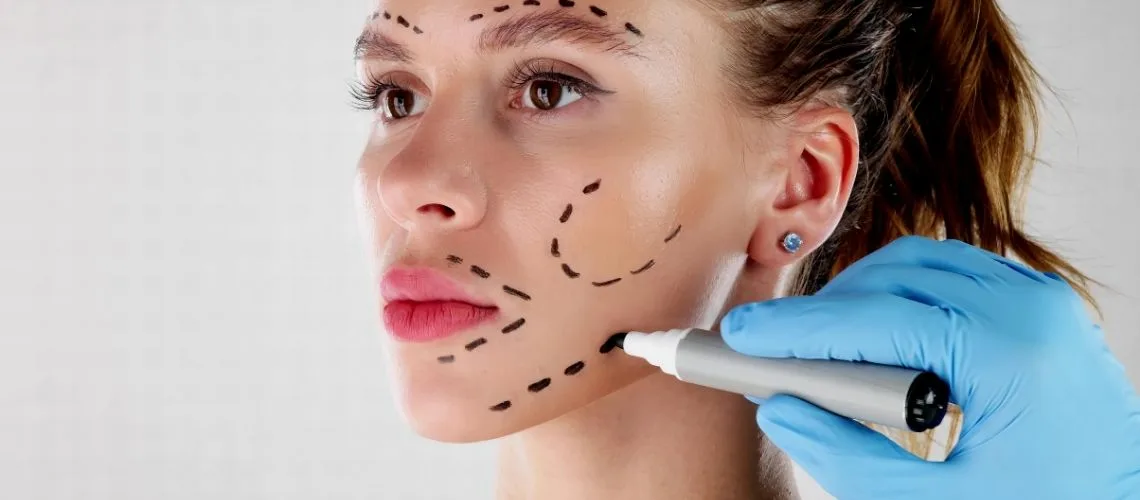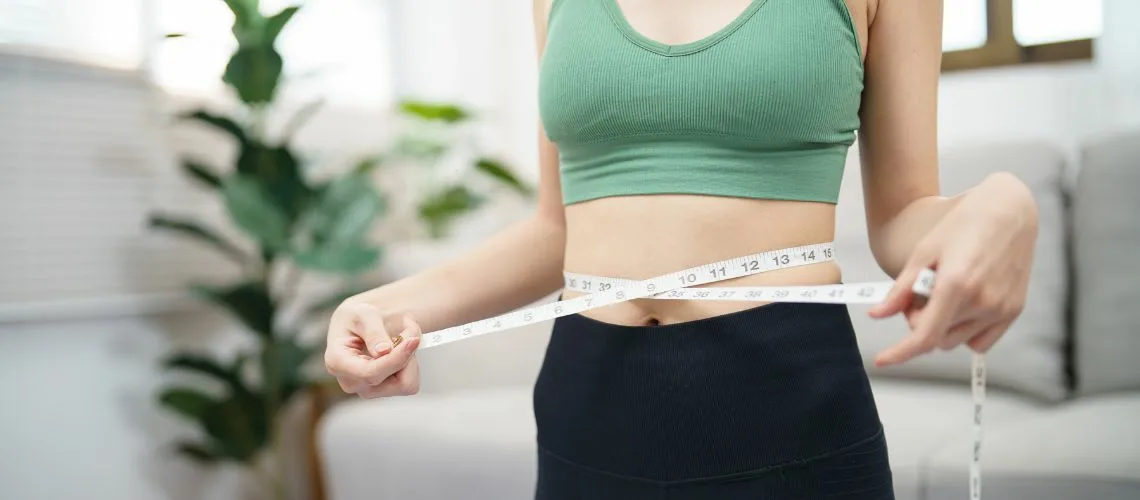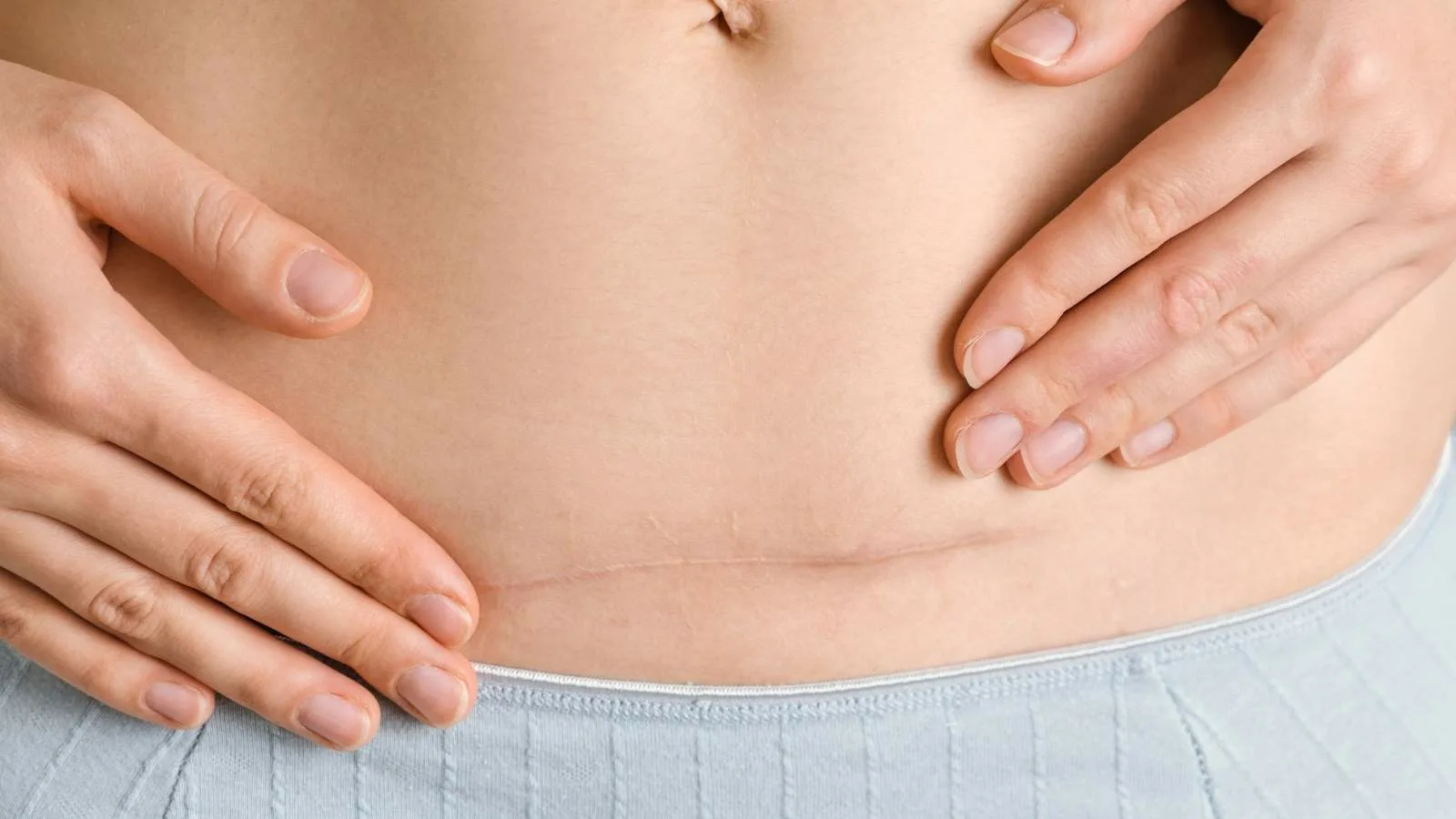Pregnancy after tummy tuck surgery is medically possible. Abdominoplasty does not affect fertility, but future pregnancies may alter surgical results, causing stretching of the abdominal skin and weakening of tightened muscles.
Planning pregnancy after a tummy tuck requires careful timing. Surgeons often recommend completing childbearing before undergoing abdominoplasty to preserve the aesthetic benefits of the procedure.
Risks of pregnancy following tummy tuck include potential stretching of scars, loose skin, and weakened abdominal repair. While not harmful to the baby, these changes may compromise cosmetic results.
Women who become pregnant after abdominoplasty can still deliver safely. However, revision surgery may be needed post-pregnancy to restore tightened contours and achieve the desired abdominal appearance.
Is Pregnancy Safe After a Tummy Tuck?
Many people wonder whether becoming pregnant after a tummy tuck poses any risk to the baby or mother. The reassuring news is: If you’re in good general health and have recovered well from surgery, pregnancy is usually safe. A tummy tuck focuses mainly on the skin and muscle layers and does not directly interfere with what’s happening inside the uterus, so it does not contain any mechanism that could hinder a baby’s development.
What exactly do we mean by “safe”? Primarily, it refers to having a sufficiently healed and well-maintained abdominal wall, which is better prepared for the strain, weight gain, and hormonal changes that come with pregnancy. This increases comfort for the mother and does not present an obstacle to the baby’s growth.
During pregnancy, hormones like estrogen, progesterone, and relaxin increase in the body and enhance tissue elasticity, helping the abdomen accommodate the growing baby. The safety of a tummy tuck is related to the fact that this ability to stretch is not lost. Even if the muscles are tightened during surgery, you do not lose all natural stretching capacity. The key is waiting the recommended amount of time for the tissues to fully heal after surgery. This way, the stitches and the tension around the incision site can gain stability. If pregnancy occurs before healing is complete, the additional stretching of the skin and muscles becomes riskier and could cause widening of scar tissue or strain on the muscles.
Usually, if you proceed under close medical supervision, no additional complications are expected in a post-tummy-tuck pregnancy. You simply have to keep in mind the scar tissue from the surgery and closely monitor the baby’s development with regular checkups. Adhering strictly to your doctor’s recommendations, maintaining a healthy diet, and following a suitable exercise routine also help ensure a smooth experience. In conclusion, as long as enough time has passed since surgery and your overall health is suitable, having had a tummy tuck should not overshadow your pregnancy.
How Long Should You Wait After a Tummy Tuck?
The most common piece of advice for planning a pregnancy following a tummy tuck is simply “Be patient.” But how patient? Different sources provide timelines ranging from six months to 12 months. The widely accepted view is that waiting 12 months (1 year) is ideal for tissues to mature and incisions to fully heal. Of course, this is not a one-size-fits-all rule; factors like your age, overall health, healing capacity, and even lifestyle can shorten or lengthen this timeframe.
To understand why this length of time is necessary, remember the anatomical changes a tummy tuck creates. In some cases, muscles are reconnected, excess skin is removed, and, if needed, the belly button is repositioned. Each of these interventions requires a certain healing period for the skin and muscles. Post-surgery, your body forms new scar tissue, which over time improves in quality, elasticity, and strength. Completing this phase helps ensure the abdominal wall is more resilient to the extra load that a growing uterus and increased intra-abdominal pressure will bring during pregnancy.
The first consideration during this waiting period is lifestyle. If you smoke, you’re strongly advised to quit, because smoking adversely affects wound healing. You should also modify your diet to include protein, vitamins, and minerals in sufficient amounts. Nutrients like vitamin C and zinc can aid collagen production and foster faster strengthening of scar tissue. As for physical activity, strenuous exercise or sudden movements are generally not advised early on, but with your doctor’s approval, light walking or low-impact cardio can support blood circulation and healing.
If you happen to conceive before the recommended 12 months, do not panic. It does not guarantee that everything will go poorly. The important thing is to stay under medical supervision, avoid activities that overly strain the abdominal area, and keep your weight gain controlled. Excessive tension on the incision before it has fully healed may increase the likelihood of tissue damage or widened scarring. Even so, waiting a year offers the most comfortable outcome for both mother and baby in the long run. Some patients ask, “My recovery is quick; could I get pregnant after six months without problems?” The best answer comes from clinical evaluations by the surgeon who performed your procedure and from listening to your body’s signals. Everyone’s body heals at its own pace.
Does Pregnancy Affect Your Tummy Tuck Results?
Pregnancy naturally brings about major transformations in a woman’s body. The tightened and smooth abdominal profile you gained through a tummy tuck can be directly impacted by these changes. Imagine placing a large suitcase on a neatly made bed—the sheets and pillows will inevitably shift. Similarly, once the abdomen is stretched and extended during pregnancy, some part of the aesthetic improvements from surgery may be undone.
The most common concerns are the return of loose skin and the possible reoccurrence of diastasis recti (separation of the abdominal muscles). Even if the muscles were brought together and tightened midline during surgery, the enlargement of the abdomen in pregnancy might reduce that tightness. The key question is whether or not these changes are permanent. Some patients find that, although they experience minor abdominal relaxation post-pregnancy, they still look better compared to their pre-surgery appearance. Others, especially those who experience considerable weight gain or multiple pregnancies, might see their abdomen return to a state similar to before surgery.
Skin elasticity is also crucial. Younger individuals or those whose skin maintains strong elasticity typically bounce back faster after pregnancy. By contrast, if you are older or already had deep stretch marks, regaining a tight stomach may be more difficult. Additionally, excessive weight gain during pregnancy is very significant; gaining a lot of weight stretches the skin more severely, and the more you have to lose postpartum, the higher the potential for skin sagging.
Yet saying something like, “You’ll never get back to the same look after a tummy tuck” is not entirely accurate. Suitable exercise, a balanced diet, and following your doctor’s advice can help you largely maintain your results. After giving birth, once you’ve allowed your body time to recover—especially after the nursing period if applicable—some people choose to consider a minor revision procedure. This can correct any aesthetic changes caused by pregnancy.
Does a Tummy Tuck Impact Fertility?
“Fertility” refers to a woman’s natural ability to conceive. Because a tummy tuck focuses on the abdominal muscles and excess skin rather than the reproductive organs, it has no direct effect on fertility. Ovulation cycles, hormonal secretions, and the internal functions of the uterus continue as they did before surgery. Think of it like redecorating your living room—it doesn’t change the functioning of your kitchen since you’re not touching that area.
Of course, your overall health and the medications used following surgery can have indirect effects. For instance, you might need to use painkillers or antibiotics for a certain period post-op. If you’re planning a pregnancy, it’s healthier not to attempt conceiving until those medications are completely out of your system. This issue relates to the temporary use of drugs, rather than a direct reduction in fertility.
Additionally, if you had multiple procedures such as intensive liposuction or breast lifts combined with your tummy tuck, the overall recovery and post-anesthesia period might be prolonged. During this extra recovery time, your body experiences stress that could slightly affect hormonal balance. However, this effect is neither permanent nor does it eliminate fertility. By resting well, maintaining a good diet, following your doctor’s guidelines, and taking any necessary tests for reproductive health, you minimize these potential stresses.
Another matter is your psychological state after a tummy tuck. Being content with your body image may boost your self-confidence and improve your overall quality of life—even your sex life. Although fertility itself may not directly increase, a more positive frame of mind can have an indirect positive influence on pregnancy planning. It’s known, for instance, that elevated stress hormone levels (like cortisol) can cause variations in reproductive cycles. Attempting to conceive while relatively stress-free and at peace with your body is always an advantage.
Does Pregnancy Become Higher Risk After a Tummy Tuck?
A common concern for those considering pregnancy after a tummy tuck is, “I’ve had this surgery—am I now facing added risks during pregnancy?” In truth, the medical literature does not show a significantly higher rate of pregnancy complications in those who have had tummy tucks. However, some research suggests there may be a slight increase in the incidence of preterm (early) births or cesarean deliveries. This increase isn’t always major nor does it apply to everyone, but a history of surgery is always an important piece of information that prompts extra vigilance from healthcare professionals.
This is particularly relevant in cases where the abdominal muscles were repaired or tightened, as a growing uterus can create additional tension on these muscles. Some experts propose that such tightness could in some cases elevate the risk of early labor due to increased pressure on the uterus, but these mechanisms don’t uniformly apply to everyone. Factors like individual elasticity and how well scar tissue has healed vary greatly from person to person.
Another aspect is the likelihood of a cesarean birth. A prior surgery in the abdominal region alters the anatomical layout. Scar tissue from that surgery might affect the approach a doctor takes if a cesarean becomes necessary. For instance, if the incision line from the tummy tuck is in or near the spot where C-section cuts are typically made, your doctor may opt to use that same line or make a separate incision. The key point is that it does not automatically pose a big threat to you or the baby. With proper planning and an experienced medical team, standard cesarean procedures can be safely performed.
Additional risk factors such as high blood pressure, diabetes, or intra-abdominal adhesions naturally warrant closer prenatal monitoring. If you add a tummy tuck to this picture, doctors may ask for more frequent tests or ultrasounds. These precautions aim to detect issues early and intervene if needed. Ultimately, having had a tummy tuck is not considered a major risk factor for pregnancy, though it may call for more attentive follow-up.
Can You Get a Corrective Tummy Tuck After Pregnancy?
Many women undergo a tummy tuck and later become pregnant and give birth. Sometimes, they worry: “Oh no, I’m starting to go back to my previous look!” Fortunately, modern medicine has solutions here as well. If some of the tight look and contoured shape you gained from surgery has diminished post-pregnancy, you can often choose a revision abdominoplasty.
Weight gained during pregnancy can re-stretch the skin and, although less common, can cause the muscles to separate again (diastasis recti). It’s crucial to allow at least six months—preferably a year—after giving birth for your body to recover. During this period, hormonal levels normalize, the uterus shrinks, and the skin partially regains its elasticity. If you opt for a revision before completing this recovery, the tissues you’re operating on might not be fully stable, complicating the achievement of satisfying results.
The extent of the revision surgery depends on both the scope of the original tummy tuck and the changes your body underwent during pregnancy. Some patients need only minor skin removal, while others might need further muscle repairs or re-positioning of the belly button. One advantage is that revision procedures can often be shorter than the first operation and may require less tissue removal. Still, it is a surgical procedure involving anesthesia, wound healing, and possible complications.
Women who don’t plan on having more children may prefer to schedule a revision so they can preserve their results longer. A subsequent pregnancy could stretch the skin and muscles again, undoing some of the effects of a second surgery. Therefore, if maintaining ideal aesthetic results for as long as possible is your goal, finalizing your family planning before opting for a revision is often a more strategic approach.
Should I Consult My Doctor Before Planning a Pregnancy?
If you dream of becoming a mother after a tummy tuck, one of your first steps should be consulting the plastic surgeon who performed your operation—or an obstetrician. This consultation isn’t just about aesthetic concerns, such as “Will I need surgery again?” but also about the medical aspects of ensuring a healthy pregnancy. The state of your abdominal muscles, your incision’s healing progress, your skin elasticity, and overall health can all impact your pregnancy.
For example, your doctor might conduct a physical exam to assess the strength of your scar tissue and whether enough time has passed since surgery. Additionally, basic hormone tests, blood work, and a gynecological checkup are important for any woman planning to conceive. In some cases, controlling your weight before becoming pregnant not only eases recovery post-surgery but can also help prevent complications during pregnancy.
Another advantage of consulting your doctor is discussing the possibility of minor pre-pregnancy revisions. If you have small aesthetic concerns from the original surgery, you can ask whether it’s better to address them before pregnancy or wait until afterward. Suppose you’re bothered by a slight excess of skin and worry that pregnancy might worsen it—your doctor can guide you. It might be more practical to see how your body responds after pregnancy and then, if needed, schedule a more comprehensive revision.
Is Multiple Pregnancy Safe After a Tummy Tuck?
For mothers or prospective mothers who say, “I’m not planning on stopping at one child; I’d like a few more,” a big question is “Is multiple pregnancy safe after a tummy tuck?” The short answer: Yes, generally it’s safe. However, each subsequent pregnancy involves repeated expansion and stretching of the abdomen, making it more challenging to preserve the aesthetic results of the surgery.
Back-to-back or multiple pregnancies will cause the abdominal muscles and skin to expand repeatedly. By the second or third pregnancy, the muscles may stretch more easily than they did the first time because the tissues have a “memory” of previous pregnancies. While not typically a major health concern, it can compromise the tight look you initially gained from surgery. Those who gain weight easily may find it more difficult to lose pregnancy weight each time, intensifying issues like abdominal sagging and stretch marks.
The elapsed time since surgery and the gap between pregnancies is another factor. If you waited a full year after surgery before your first baby, you should similarly give your body enough time to recover before a second pregnancy. Every birth has a postpartum recovery phase—during which hormone levels settle, the uterus returns to normal size, and the skin begins regaining some elasticity. Maximizing this recovery period helps you maintain closer-to-ideal results.
If you plan multiple pregnancies, one option is to postpone your tummy tuck until after you’re done having children, so you can enjoy a final, stable result. If, however, you’re significantly bothered by your current appearance, there’s no rule saying you must wait. Just remember that future pregnancies might prompt you to revisit those aesthetic concerns or even need a second surgery down the road.
How Does Pregnancy Weight Gain Affect Tummy Tuck Results?
Weight gain during pregnancy is a normal part of allowing the baby to grow, as the mother’s body adapts in terms of energy, nutrients, and fluids. However, the amount of weight gained can greatly influence the shape achieved through your tummy tuck. Imagine a freshly painted and taut canvas; pouring too much paint or water onto it can create waves or swelling on the surface. Likewise, significant weight gain can stretch your abdomen’s skin and muscles, diminishing the tightness you originally gained from surgery.
Ideally, you should try to stick close to the recommended weight gain range advised by global or local health authorities. For example, someone with a normal pre-pregnancy Body Mass Index (BMI) might gain around 10–15 kg. However, these figures are individual, and it’s best to follow the range suggested by your healthcare provider. Excessive weight gain elevates the risk of gestational diabetes and hypertension in addition to compromising the aesthetic outcome.
If preserving your tummy tuck results is important to you, healthy eating and gentle exercise during pregnancy are vital. Light walking, prenatal Pilates, or yoga can keep your blood circulation flowing and strengthen muscles, aiding postpartum recovery. Applying moisturizers and creams to prevent stretch marks helps maintain skin elasticity, minimizing further stretching or tearing. And if you find yourself gaining weight quickly during pregnancy and worry about harming your surgical results, be patient with your body. It often takes six months or more after birth for swelling to subside and for the skin to readjust. At that point, you and your doctor can discuss any aesthetic touch-ups. The key is always prioritizing both your health and your baby’s health.
Is Cesarean Delivery Possible After a Tummy Tuck?
Many women who have had a tummy tuck wonder whether they will give birth via normal (vaginal) delivery or cesarean section. Having had previous abdominal surgery does not outright eliminate your chances of a vaginal birth. However, in certain cases, your doctor may recommend a C-section for medical reasons, such as concerns about tension in the abdominal wall or potential risks along the old incision line. Of course, this decision also depends on the course of your pregnancy, the baby’s position, placental location, and your overall health.
If a cesarean becomes necessary, it’s crucial that the surgical team knows about your tummy tuck history. Because the incision used for a tummy tuck often lies in or near the same area where a C-section cut is typically made (lower abdomen), your doctor might either use your existing scar or create a new one. The presence of scar tissue can also affect how they carry out the surgery. In any event, this does not automatically mean you or your baby are at any greater risk; an experienced team with a well-devised plan should handle it smoothly.
Another point to consider is possible adhesions. Postoperative internal stitches and scar tissue can cause slight adhesions inside the abdomen. While this does not guarantee complications, it means the surgeon needs to be extra cautious. Planning ahead by considering the possibility of a cesarean makes it easier to align your pregnancy care accordingly. Talking with both your obstetrician and your plastic surgeon before labor can help organize a safe delivery plan. Overall, so long as the baby is healthy, your general state is good, and your medical team is prepared, normal deliveries can often proceed without issues.
Tips for Preserving Tummy Tuck Results After Pregnancy
In the postpartum period, you may find these practical tips helpful for maintaining as much of your abdominoplasty outcome as possible. The first and most important rule is to lose weight slowly and steadily. Rapid diets aiming for immediate weight loss can shock your body and lead to skin sagging. Gradual changes in eating habits and moderate exercise produce more lasting benefits.
Before beginning any exercise regimen, be sure to get the green light from your doctor. Light-paced walking, swimming, or yoga provides cardiovascular support and strengthens your muscles, helping restore abdominal tone. Avoid strenuous workouts (like heavy-weight squats or intense crunches) early on, to protect your incisions. During pregnancy and early postpartum, your muscles haven’t fully regained their former elasticity and need time to adjust.
Another key factor is proper skin care. Applying moisturizers, oils for gentle massage, or anti-stretch mark creams helps maintain skin elasticity. While not magical, such products can aid in faster recovery, especially on skin that’s already been stretched by surgery. Good skin care also enhances blood circulation, which aids tissue renewal.
Stress management should not be underestimated. Adjusting to daily life with a new baby, potential sleep deprivation, and other routine stressors can raise cortisol levels, making weight control more challenging and slowing skin regeneration. Simple stress-relief practices—deep breathing exercises, meditation, or short breaks—can yield significant long-term benefits for both your body and your ability to retain the results of your tummy tuck.
Lastly, do not overlook regular follow-up appointments. Continue to receive guidance from your plastic surgeon or other medical professionals about how to maintain your tummy tuck results after pregnancy. If necessary, minor revisions or tweaks can be discussed down the line. Essentially, consistent self-care and a healthy lifestyle can help you maximize long-term benefits after abdominoplasty.
What Are Realistic Expectations for the Post-Pregnancy Body?
Pregnancy and childbirth bring about profound changes in a woman’s body, and this natural transformation can’t be entirely avoided—even if you’ve had a tummy tuck. Therefore, it’s crucial for both physical and emotional health to maintain realistic expectations of your body in the postpartum period.
First, losing pregnancy weight takes time. Some people drop most of their baby weight within the first three or four months, while others may need closer to a year. This variation depends on metabolism, breastfeeding, genetics, and lifestyle. If you avoid comparing yourself to others and give your body the patience it requires, you’ll have a better chance of regaining the flat stomach you had post-surgery.
Second, stretch marks or loosening skin may be unavoidable to some degree. Rapid weight gain in the last trimester or reduced skin elasticity can make these changes more prominent. While a tummy tuck removes excess skin and provides tightness, it doesn’t eliminate stretch marks. Thus, it’s wise to maintain regular skin care, proper hydration, and avoid sudden weight gain during pregnancy to prevent new stretch marks from forming or existing ones from getting worse.
You may also notice changes in other parts of your body—breast shape and size, hips widening or narrowing, or even a change in foot size. These are results of pregnancy’s hormonal and structural effects, and a tummy tuck cannot directly address these areas. As a result, you may consider further cosmetic treatments, or you might see improvements through simpler approaches like exercise or diet.

Op. Dr. Erman Ak is an internationally experienced specialist known for facial, breast, and body contouring surgeries in the field of aesthetic surgery. With his natural result–oriented surgical philosophy, modern techniques, and artistic vision, he is among the leading names in aesthetic surgery in Türkiye. A graduate of Hacettepe University Faculty of Medicine, Dr. Ak completed his residency at the Istanbul University Çapa Faculty of Medicine, Department of Plastic, Reconstructive and Aesthetic Surgery.
During his training, he received advanced microsurgery education from Prof. Dr. Fu Chan Wei at the Taiwan Chang Gung Memorial Hospital and was awarded the European Aesthetic Plastic Surgery Qualification by the European Board of Plastic Surgery (EBOPRAS). He also conducted advanced studies on facial and breast aesthetics as an ISAPS fellow at the Villa Bella Clinic (Italy) with Prof. Dr. Giovanni and Chiara Botti.
Op. Dr. Erman Ak approaches aesthetic surgery as a personalized art, tailoring each patient’s treatment according to facial proportions, skin structure, and natural aesthetic harmony. His expertise includes deep-plane face and neck lift, lip lift, buccal fat removal (bichectomy), breast augmentation and lifting, abdominoplasty, liposuction, BBL, and mommy makeover. He currently provides safe, natural, and holistic aesthetic treatments using modern techniques in his private clinic in Istanbul.









